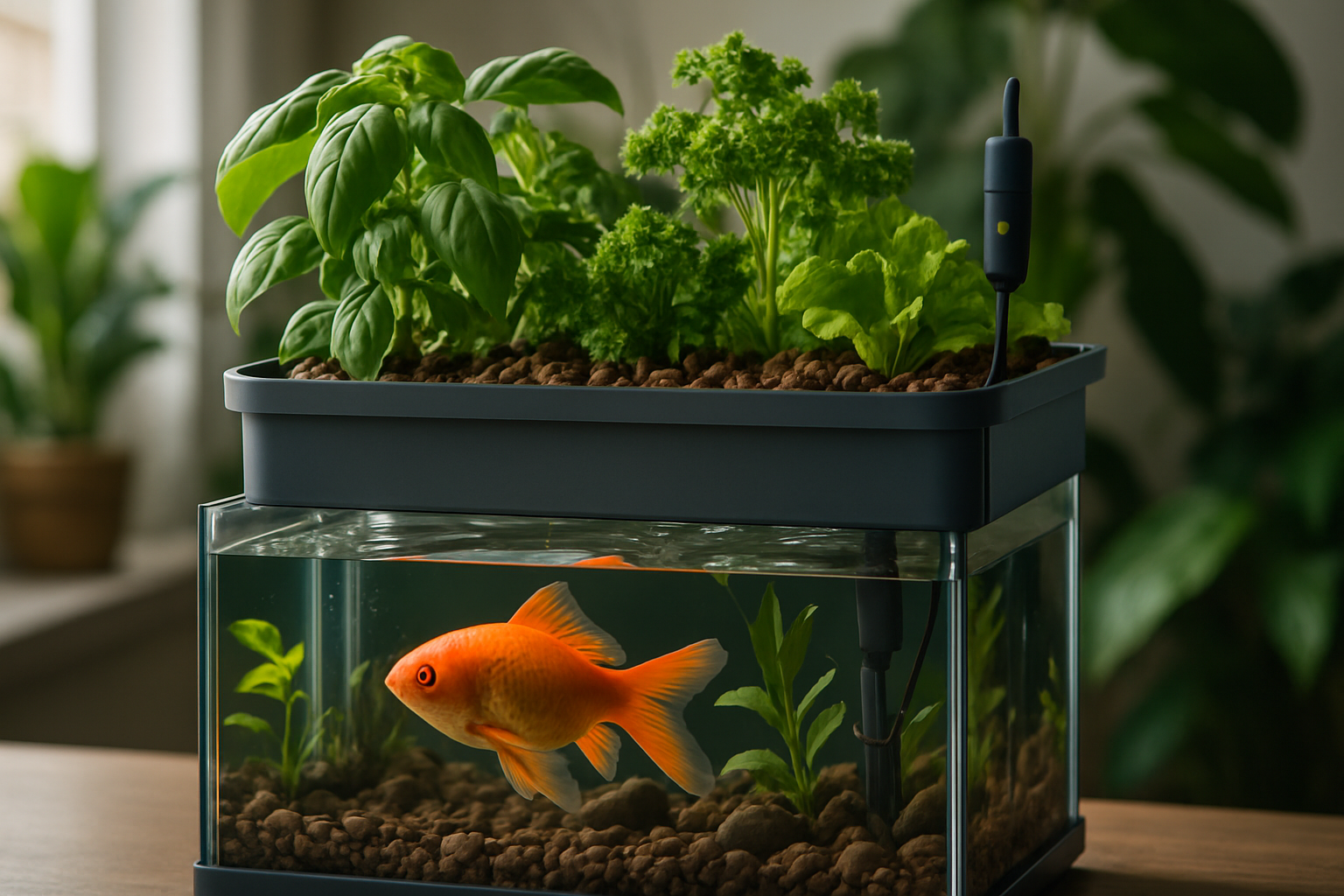Aquaponic Pet Care: The Future of Sustainable Fish and Plant Keeping
Imagine a world where your fish tank not only houses vibrant aquatic life but also grows fresh herbs and vegetables for your dinner table. This isn't a futuristic fantasy, but the reality of aquaponic pet care - a revolutionary approach to fish keeping that's gaining traction among eco-conscious pet owners and urban gardeners alike. Let's dive into the fascinating world of aquaponics and explore how it's transforming the way we care for our aquatic pets while promoting sustainable living.

The process begins with fish producing ammonia-rich waste, which is then converted into nitrites and nitrates by beneficial bacteria. These nitrates serve as a natural fertilizer for the plants, which absorb them through their roots. As the plants consume the nutrients, they purify the water, which is then recirculated back to the fish tank. This continuous cycle ensures optimal water quality for the fish and nutrient-rich conditions for plant growth.
A Brief History of Aquaponics in Pet Care
While the concept of aquaponics dates back to ancient civilizations like the Aztecs, its application in modern pet care is relatively recent. The idea of combining ornamental fish keeping with plant cultivation gained momentum in the 1970s, but it wasn’t until the early 2000s that aquaponics started to gain traction in the pet industry.
Pioneering hobbyists and researchers began experimenting with small-scale aquaponic systems, adapting the principles of commercial aquaponics to suit home aquariums. These early adopters faced challenges in balancing water chemistry, selecting compatible fish and plant species, and designing efficient systems for domestic use. However, their perseverance laid the groundwork for the current surge in aquaponic pet care.
The Rise of Home Aquaponic Systems
In recent years, the availability of compact, user-friendly aquaponic systems has skyrocketed. These range from sleek, countertop units perfect for small apartments to larger, modular setups that can accommodate multiple fish species and a variety of plants. Prices for entry-level systems start at around $100, while more advanced setups can cost upwards of $1000, depending on size and features.
The market impact of aquaponic pet care has been significant. According to recent industry reports, the global aquaponics market is expected to grow at a compound annual growth rate (CAGR) of over 12% between 2021 and 2026. This growth is driven by increasing awareness of sustainable living practices, the desire for fresh, home-grown produce, and the appeal of low-maintenance pet care solutions.
Benefits for Fish and Plant Enthusiasts
Aquaponic systems offer numerous advantages for both fish keepers and plant enthusiasts. For fish, the constant filtration and nutrient cycling result in exceptional water quality, reducing the need for frequent water changes and minimizing stress on the aquatic inhabitants. This can lead to healthier, more vibrant fish with longer lifespans.
Plant lovers benefit from accelerated growth rates and higher yields compared to traditional soil-based gardening. The nutrient-rich water promotes lush foliage and abundant harvests, even in limited space. Common plants grown in aquaponic systems include leafy greens like lettuce and spinach, herbs such as basil and mint, and even fruiting plants like tomatoes and strawberries.
Challenges and Considerations
While aquaponic pet care offers many benefits, it’s not without its challenges. Maintaining the delicate balance between fish waste production and plant nutrient uptake requires careful monitoring and adjustment. Newcomers to aquaponics may face a learning curve in managing water chemistry, preventing algae growth, and selecting compatible fish and plant species.
Additionally, initial setup costs can be higher than traditional aquariums or garden beds. However, many enthusiasts find that the long-term savings on water, fertilizers, and fish food offset these upfront expenses.
Environmental Impact and Sustainability
One of the most compelling aspects of aquaponic pet care is its potential for environmental sustainability. These systems use up to 90% less water than traditional gardening methods, as the water is constantly recycled. They also eliminate the need for chemical fertilizers and pesticides, promoting organic, eco-friendly cultivation.
Furthermore, aquaponics addresses concerns about overfishing and unsustainable aquaculture practices. By allowing hobbyists to raise their own fish for ornamental or consumption purposes, it reduces reliance on commercial fish farming and its associated environmental impacts.
The Future of Aquaponic Pet Care
As technology advances and awareness grows, the future of aquaponic pet care looks promising. Innovations in automation and smart monitoring systems are making it easier than ever for beginners to succeed with aquaponics. Some cutting-edge systems now incorporate AI-driven sensors that automatically adjust water chemistry and feeding schedules, further simplifying maintenance.
Research is also ongoing into expanding the range of fish and plant species suitable for aquaponic systems. This could lead to more diverse and specialized setups, catering to niche interests within the pet and gardening communities.
Conclusion: A Sustainable Solution for Modern Pet Keeping
Aquaponic pet care represents a fascinating convergence of pet keeping, gardening, and sustainable living. As more people seek ways to reduce their environmental footprint while enjoying the companionship of aquatic pets, aquaponics offers an innovative solution that benefits both animals and plants. Whether you’re a seasoned aquarist looking for a new challenge or an urban gardener interested in sustainable food production, aquaponic pet care opens up a world of possibilities for harmonious, eco-friendly living.





